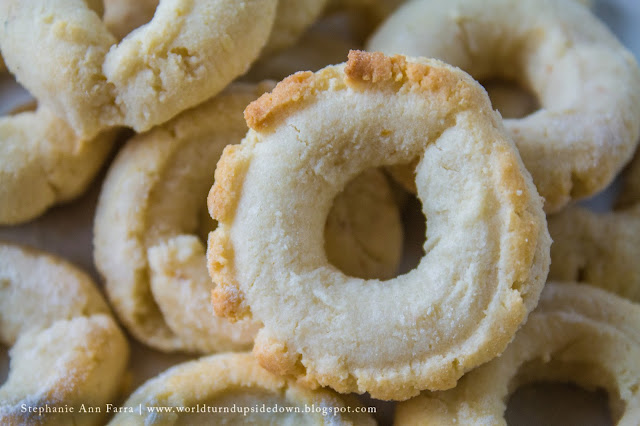This is a great recipe to break your mom's ancient syringe cookie maker from the cabinet! The taste, and recipe is almost identical to modern Italian Almond Cookies or marzipan and would be a fun, historical recipe to add to the list of Christmas cookies this year.
This recipe is essentially marzipan and is very similar to one used today in Denmark for Marzipan ring cakes or kransekage. Kransekage are a traditional Danish New Year's and wedding treat. They make each ring slightly bigger than the one before and after they are baked, stack them to form a tree and drizzle icing on top. It's a wedding tradition to let the couple remove the top layer of the ring cake together. While no one knows the origin of marzipan almost every European country has a form of it and in many countries it has a romantic implication. In Italian, the word for marzipan itself has romantic connotations. It was even featured in Romeo and Juliet.
18th Century Syringe Biscuits
Ingredients:
- 2 Cups pounded, blanched Almonds
- 2 Cups Powdered Sugar
- Egg Whites
- Lemon Peel
Instructions:
Preheat your oven to 400 degrees. Pound your blanched almonds until they are smooth, add the powdered sugar and the lemon peel. Mix in egg whites little by little until it forms a smooth, easily malleable paste. Put your paste into your syringe and squeeze one long line on a floured surface and cut it into 3 inch sections. Connect the ends of each section to form loops. Line a baking sheet with parchment paper place biscuits on the baking sheet and bake for 10-11 minutes. Watch closely as these don't brown like most baked goods. Let cool and enjoy!
*For this recipe you need a homemade syringe like the one pictured, a churro maker, or an old-fashioned cookie syringe that lets you choose the amount of dough on release. If none of these are available you can roll the dough "snake" style on a floured surface.
**To speed things up you can use store bought almond flour and powdered sugar. You can make period powdered sugar by pulverizing granulated sugar in a food processor. Period powdered sugar did not have cornstarch it in as most commercial powdered sugars have today.










































